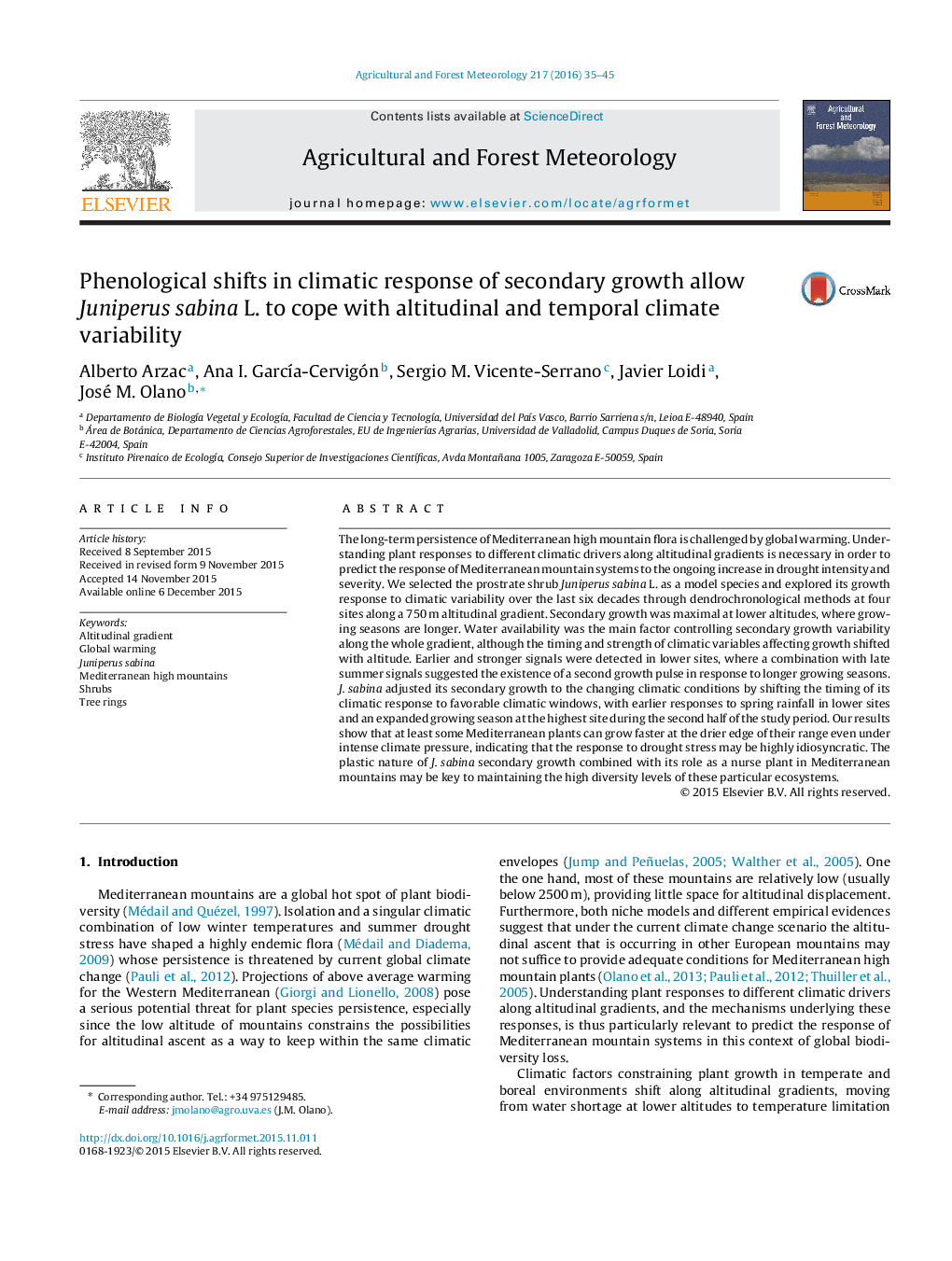| کد مقاله | کد نشریه | سال انتشار | مقاله انگلیسی | نسخه تمام متن |
|---|---|---|---|---|
| 81390 | 158314 | 2016 | 11 صفحه PDF | دانلود رایگان |

• Drought constrains growth along altitudinal gradients in Mediterranean mountains.
• Secondary growth peaks at low altitudes under higher summer drought stress.
• Climatic signal shows a temporal shift along the altitudinal gradient.
• Climatic signal has moved ahead one month over the 1953–2009 period.
• Secondary growth plasticity may help junipers to cope with increasing drought stress.
The long-term persistence of Mediterranean high mountain flora is challenged by global warming. Understanding plant responses to different climatic drivers along altitudinal gradients is necessary in order to predict the response of Mediterranean mountain systems to the ongoing increase in drought intensity and severity. We selected the prostrate shrub Juniperus sabina L. as a model species and explored its growth response to climatic variability over the last six decades through dendrochronological methods at four sites along a 750 m altitudinal gradient. Secondary growth was maximal at lower altitudes, where growing seasons are longer. Water availability was the main factor controlling secondary growth variability along the whole gradient, although the timing and strength of climatic variables affecting growth shifted with altitude. Earlier and stronger signals were detected in lower sites, where a combination with late summer signals suggested the existence of a second growth pulse in response to longer growing seasons. J. sabina adjusted its secondary growth to the changing climatic conditions by shifting the timing of its climatic response to favorable climatic windows, with earlier responses to spring rainfall in lower sites and an expanded growing season at the highest site during the second half of the study period. Our results show that at least some Mediterranean plants can grow faster at the drier edge of their range even under intense climate pressure, indicating that the response to drought stress may be highly idiosyncratic. The plastic nature of J. sabina secondary growth combined with its role as a nurse plant in Mediterranean mountains may be key to maintaining the high diversity levels of these particular ecosystems.
Journal: Agricultural and Forest Meteorology - Volume 217, 15 February 2016, Pages 35–45